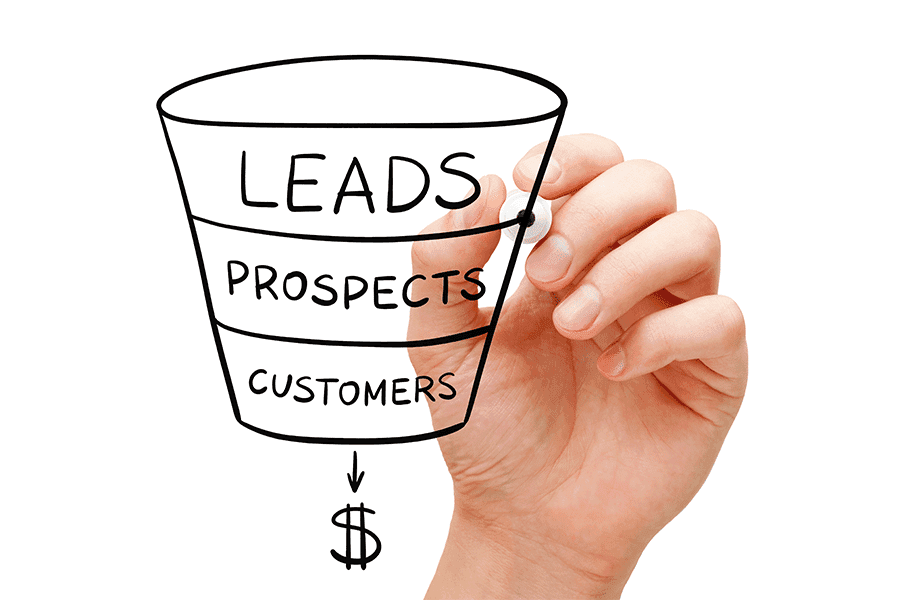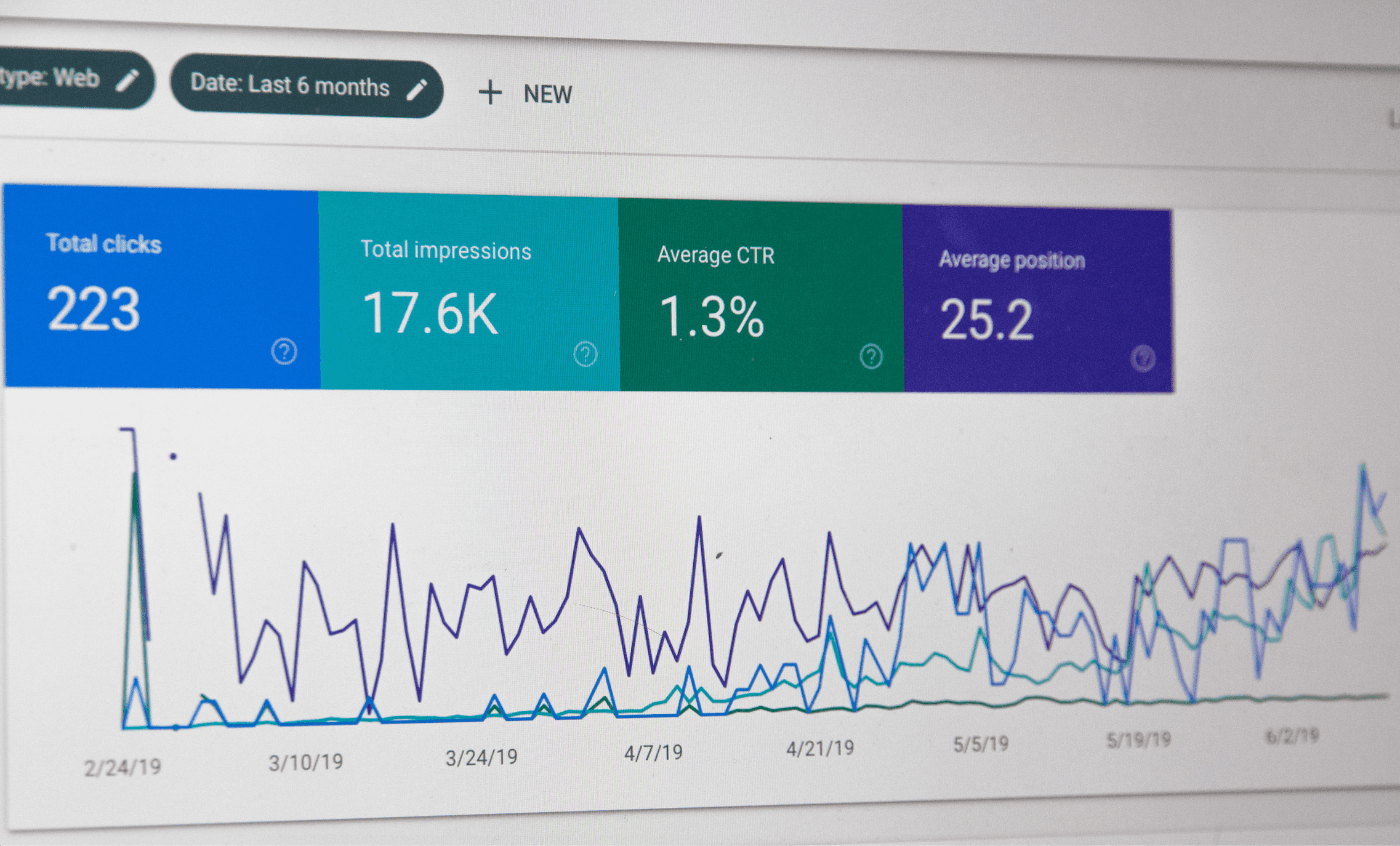How To Write Amazing Product Descriptions

When selling online, your customers cannot touch and feel your products. In order to make the sale, you have to appeal to your audience’s imagination. You need to make it easy for them to envision what it would be like to touch, feel, and own your product. To do that, you have write amazing product descriptions that captivate your audience.
These 10 basic rules can help you write killer product descriptions. At the bottom of this article, you’ll also find a product description template to check if you included all the details.
1. Start With The “Golden Circle” Rule
If you’re a marketer, the chances are you have already used the Golden Circle, an innovative concept developed by Simon Sinek. Simon states that the concept is deeply rooted in a very simple rule of biology and not psychology. The way we think, act and communicate typically moves from the outside circle to the inside circle. People start with explaining what they do and how they do it. Lastly, they get to the part of why they are doing something.
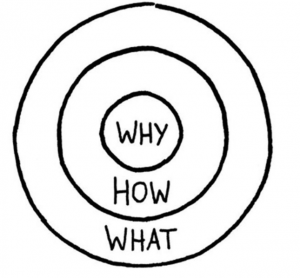
But how can using the Golden Circle help you in writing amazing product descriptions? By answering those three paramount questions – what, how and why – you will have all the facts needed to write a description that will sell your product. Here is a simple template on how to use this concept:
-WHAT – What is your product and what makes your product different from competitors’ ? For example, if you’re selling sustainable T-shirts, the distinction you’re looking for is sustainable.
-HOW – How does your product work? Any unique innovative or fun way on how customers can use the product?
-WHY – Why would someone purchase and use your product? How does it make their lives better? What problem does it solve? This is the emotional component. In case of sustainable T-shirts, you could embody the message of saving the planet and becoming a better person. That’s your unique selling point, something that speaks to their inner emotions.
2. Define Your Target Audience
The best way to define your target audience is to first define a buyer persona. A buyer persona is an imaginary person for whom you’ve developed your product and who would benefit from having it.
They represents your target audience, but it’s more realistic and relatable. In your buyers persona you can detail things like: how they speak, their favorite restaurant, what they do on the weekends, and things beyond demographics and indistinct descriptions.
Back to the sustainable T-shirts example. Your ideal buyer persona would be a millennial girl that lives in an urban environment – let’s call her Jane.
Jane recently graduated and she works in a cool digital marketing agency. Her hobbies are visiting independent coffee shops, photography, traveling and watching Netflix. She shops a lot, but she’s also aware of ethical issues caused by the fashion industry, such as using leather or fur, low wages and insecure working conditions for people in Bangladesh.
You need to know your buyer persona so well – what would make Jane laugh, what would make her shake her head in disbelief, what would make her hesitate to order and what would encourage her to order.
Although this may sound like enough information about Jane, you have to dig even further. Think about what she’s reading and which websites she visits. Consider what she wants to achieve in life, what issues keep her restless, or how she makes decisions. That will help you create a copy that speaks to her and taps into her feelings.
For example, Mimoco knows their audience so well!
To use your Mimobot simply remove Vader’s helmet to reveal the true face of the infamous dark lord of the Sith – and your USB!
The description appeals to Star Wars fans and is clearly meant for a niche audience. It’s not meant for anyone. The copy was written for Star Wars fanatics and that is perfect!
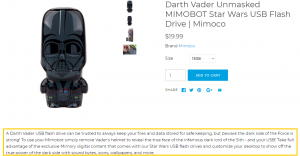
3. Define Your Tone Of Voice And Stick To It
Do you want to sound formal? Do you want to sound cool and friendly? Or maybe inspiring and personal?
Defining a tone of voice can differentiate you from your competitors and give readers a strong impression of your organization’s culture and personality.
Whatever you choose, make sure that your tone of voice indicates that you’re highly professional, that your customer service is excellent, that you’re friendly and approachable, and that you understand your customers’ needs for than anyone else.
Your brand may not be as cutting edge as Cards Against of Humanity, but we can all learn something from their masterfully crafted product descriptions. They have a humorous and edgy tone of voice and they stick to it. This irreverent style of humor matches their perfectly defined target persona, too.
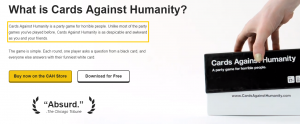
4. Mind The Keywords
Oh yes, SEO is important for your product descriptions as well. If you’re using the phrases that your buyer persona is using then you’re optimizing your product descriptions for search engines as well.
Do not forget to follow these few rules:
-Don’t use jargon or complicated phrases;
-Include your keywords in your headline, subheadings, and body text;
-Optimize your product images by using your keywords in the file name, image description, and alt tag.
One more tip – you’re not writing your product descriptions for search engines. Write for your readers first, and then optimize for browsers.
5. Don’t Use The Statements Everyone Else Is Using
It’s easy to get stuck with words and not know what else to say about your product. That will likely happen if you have hundreds of products and not all of them are relatable. Regardless, avoid using phrases like “excellent product quality”, “people love it” or “you will love it”.
A customer knows that no one would describe their products as “to be honest, quality is kind of average”, “some people love it, others not so much” or “you might love it, but we cannot guarantee that”.
Back to the sustainable T-shirt example, you could write:
-Made from organic cotton that was hand-picked and processed naturally.
-All cotton was hand picked from workers who received livable wages.
-All of our workers don this eco-friendly t-shirt while at work and at the bar.
6. Sell The Dream and Tell The Story
Selling the Dream is a famous concept luxury industry uses to attract customers. We can take Chanel as a good example. Their extravagant haute couture fashion shows are always a unique experience – such as launching a Chanel rocket at the end of the show. Even if you’re not into fashion, you’ve probably heard of this moment. People all around the world want to buy their clothes from the runway, but only a few can.

The next day, you’re headed to Sephora to get a perfume. There are hundreds of brands that you can choose from, but you made a decision to buy Chanel. Is that because you like the fragrance the most? Maybe, but not likely. You couldn’t try out all 132 brands they have. What is it then?
What happened is Chanel told you a story and created “a dream”. You watched their stunning show with clothes that you cannot afford, but you know that you can afford a fragrance, so that’s what you did. Smart move, you must admit.
Now, we know that you cannot launch a rocket, rent a train or stage a car crash, but you can create a dream for your customers. By including some mini-stories in your product descriptions, you’re lowering rational barriers against persuasion techniques.
7. Point Out Features And Benefits
By now, you’re aware that you should paint a beautiful picture of your product. But, . you might have made this key mistake. You did not state the benefits of your products.
Put simply, you must explain how a certain feature is beneficial to consumers’ lives and why it is an essential purchase.
Anorak gets straight to the point in their sleeping bag product description. They highlight a big issue for their customers and describe exactly how their product solves that issue. It’s not just another sleeping bag, it’s a bag designed to give you space and make you feel comfortable.
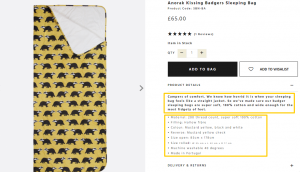
8. Keep It Short And Simple
When writing product description, have in mind that every individual utilizes a unique vocabulary. This is even more true if you’re selling your products worldwide.
In that case, a part of your audience won’t be native speakers, so avoid using words such as “malaise”, “ostentatious”, “peevish”, “ubiquitous” and similar words that are confusing to the general public. Additionally, skip out on using phrases that can lead to confusion. To bypass having confused customers, write your product descriptions in plain and simple language.
Your product description should tell a story and have listed important benefits and features, but it should not take 5 minutes to read it. Write no more than 5 sentences to tell a story and describe features and benefits in no more than 5 bullets below.
9. Make The Description Scannable
A study by Nielsen Norman Group shows that people read only 16% of the words on the average web page. This is true regardless of the popularity of your products. You should always consider that people have only so much time in the day, make the buying process easy on them.
There are a few things that you can do that make it easier for them to skim your product descriptions:
-For longer product descriptions, use subheadings to tempt scanners to start reading;
-Use bullet points to highlight the features;
-Use high-quality images to present your product;
-If applicable, use video to showcase the usage of a product.
Fab has another way of doing it – they use bold fonts and even more interestingly use red-bold fonts. This way, customers can read only a few key phrases to see if they are interested in the product.
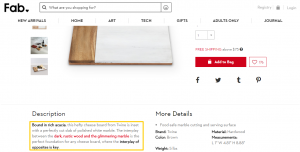
10. What If You Have Too Many Products?
Having too many products (like hundreds or thousands of them) and having amazing product descriptions might seem like an impossible mission. However, here are some tricks to maximize your efforts:
-Focus on best sellers and on products you want to start ranking for – Do SEO keyword research and figure out what product pages are popular. Write great product descriptions for those products first.
-Focus on keywords – For all the other products, focus on finding the right keywords and writing one or two good sentences for each product.
-Insert customer reviews – Ask customers for reviews and maybe offer some freebies in exchange for it (such as 5% off their next purchase or some promo code that’s valid if they make a purchase in the next two week from writing a review).
You’re now ready to write amazing product descriptions!
Product Description Template
Here’s a simple template that you can use to make sure that you included all the important elements of writing good product descriptions.
PREWRITING
-Create the Golden Circle for your products
-Define your target audience
-Define your tone of voice
-Connect your product features with benefits
-Make a list of keywords
WRITING
-Start with a great opening
-Use the proper tone
-Keep length in mind
REVISING YOUR STATEMENT
-Remove stock words
-Add keywords
-Proofread







